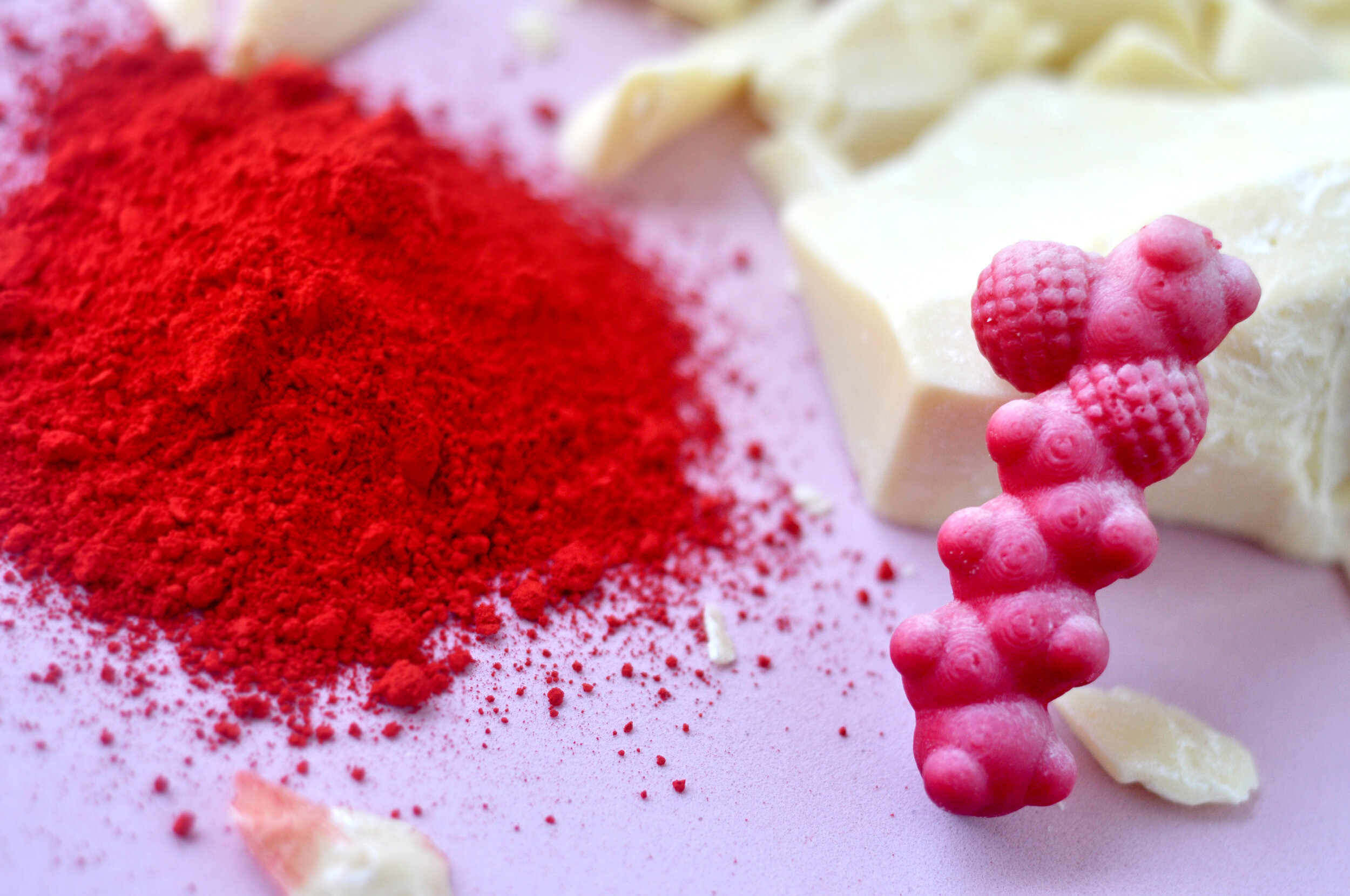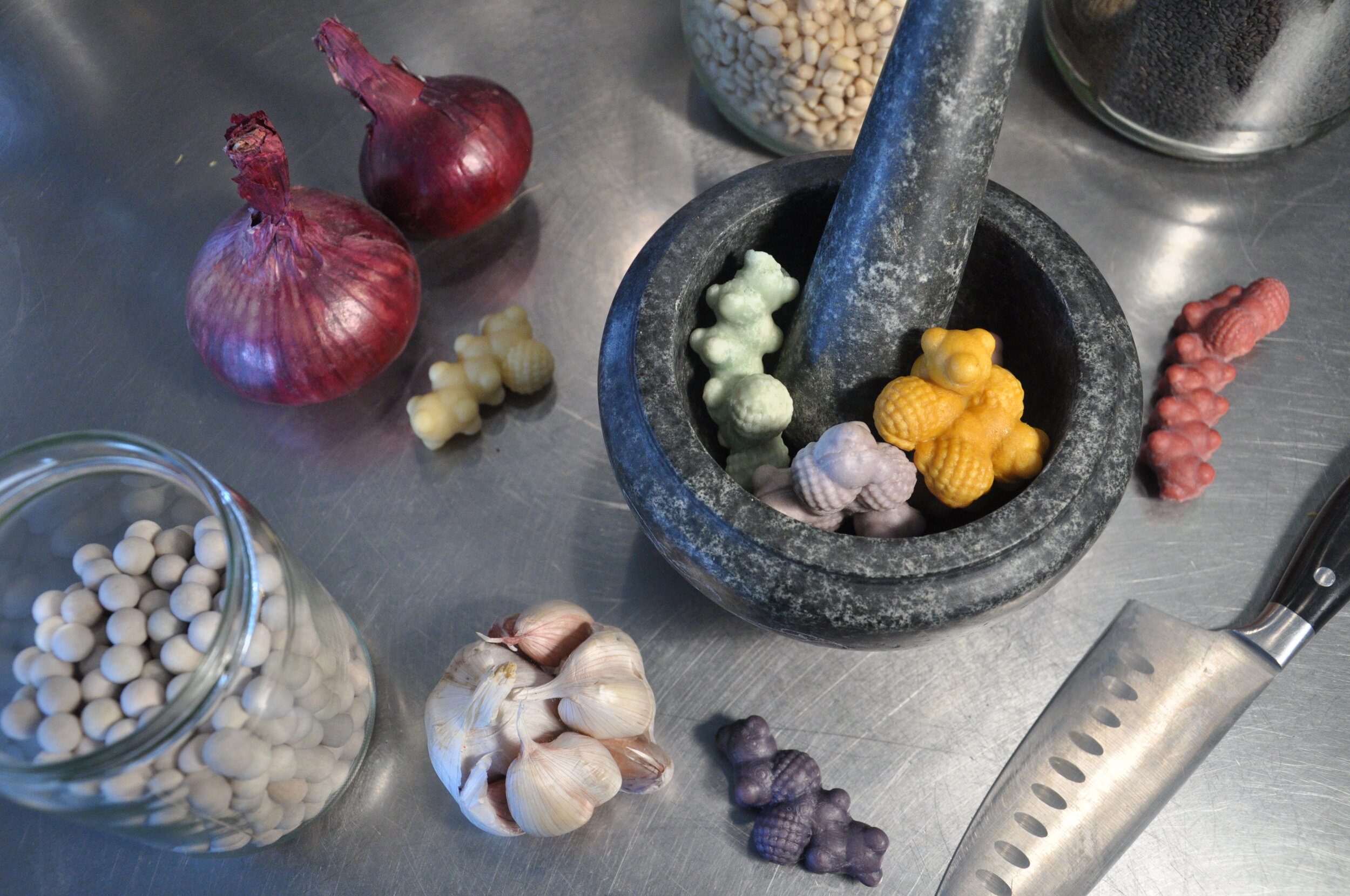
Atoma | Alexandra Genis
ATOMA is a collection of spices which create flavour through pure volatile organic compounds, inspiring people to combine, explore and experiment with different flavouring combinations.
‘No artificial aroma‘-labels have become a norm in the marketing of contemporary food products, giving in to consumer demand for the ‘real-deal’. What are the environmental consequences of Western expectations for remarkably high, all natural gustatory experiences? Nature can neither produce nor sustain the amounts of strawberries, vanilla, citrus and many more, required for flavouring all the products on supermarket shelves. Is it justifiable to use up water and soil for production of natural flavouring for industrial food products such as ice cream, cake and potato chips?
About 11000 aroma molecules are known to science. In the food industry there is a whole branch operating with more than 2000 of them at a time to manufacture the flavour profiles of everyday products. Those so called ‘volatile compounds’ are found in complex constellations in all natural foods but can also be recreated in the lab. Companies use volatile compounds to ensure the sensory quality of their existing products and to develop new ones.
ATOMA responds to this circumstance by taking industrial molecules and adapting them for the easy and convenient use in the domestic kitchen. The shape of each ATOMA-spice is the 3d printed chemical formula of the molecule, with attention to amount and placement of Carbon, Hydrogen and Oxygen atoms. Single molecules are infused in a cocoa-butter solution, colour coded according to their flavour type and carefully casted from a mold. The finished molecule can easily be rasped over a food of choice on its own or in combination with any other molecule. Thus ATOMA gives a body to the flavouring molecules, translating each into an applicable object.
The first set of ATOMA consists of 24 molecules which all together are responsible for the flavour of a strawberry. However each molecule has a unique flavour profile of its own. Public accessibility of molecules is aimed at demystifying industry while also preparing consumers for future scenarios of limited resources. From the domestic kitchen acceptance of new culinary patterns can take place. After all, what could be more essential than a molecule?
Alexandra Genis
Hi, my name is Alexandra. I’m a Speculative Designer and UX Designer, but you can call me Bio Artist :)
In the past I have been developing independent speculative design projects in art and culture internationally for a couple of years, driven by my fascination with science, biotech and ecology. Having featured in magazines and exhibitions, I found myself inside the pandemic bubble, with a deep desire to learn how to create more meaningful work. This situation made me train as a User Experience Designer, to understand human needs and how I could make life easier for others. I am excited to see how the human centred design skills will blend with my speculative background and obsession with the synthetic in future.
I believe a sustainable future can only be achieved if we provide people with access. Access to science and knowledge has the potential to transform culture. Community Bio to me stands for the access of biotechnologies for everyone and I am honoured to be able to take part in and to contribute to this community.
I am based in Berlin, Germany.




